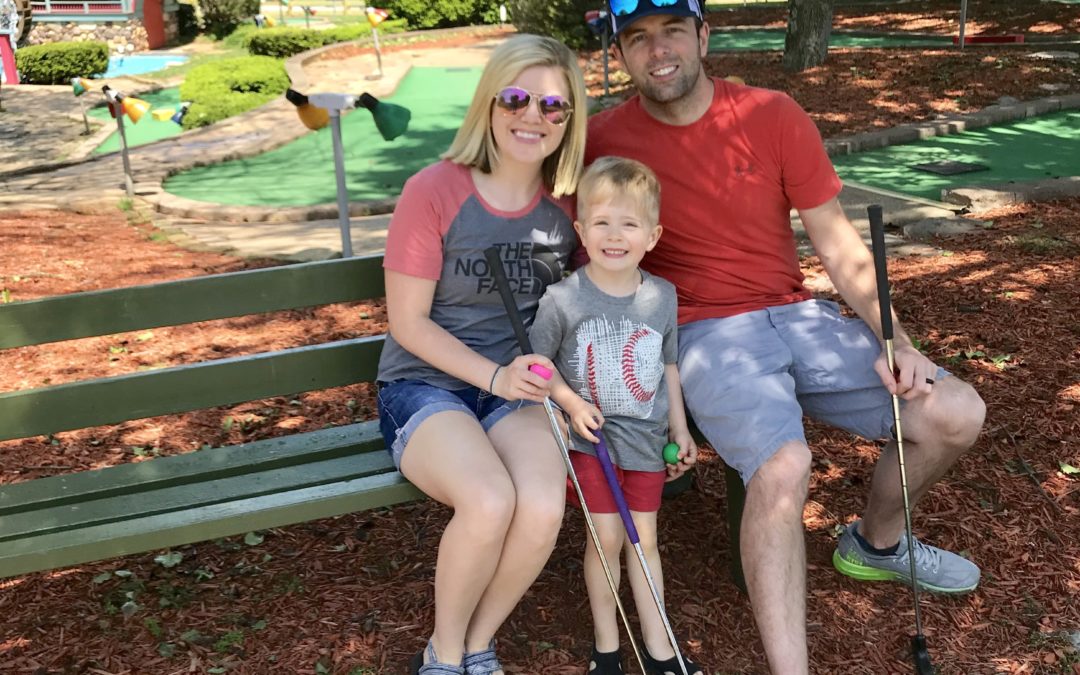Lying in a hospital bed with abdominal pain, chest pain and an elevated heart rate at age 23, little did Stefanie Staggs know that this moment was the beginning of a journey toward her life-changing discovery of PGT for ADPKD.
She nor her mother or sister had experienced any major health issues up to that point. Her father, however, had died of an aortic aneurysm, or a rupture in the largest blood vessel, when he was just 33 years old.
While in the hospital, Stefanie underwent extensive testing and was diagnosed with autosomal dominant polycystic kidney disease (ADPKD), an inherited condition, in 2010.
Stefanie’s sister eventually returned to the hospital where their father had passed away and reviewed his medical records. To the family’s surprise, his file noted that he also had ADPKD, and that the rest of Stefanie’s family should be tested.
Years later, Stefanie would search for a way to stop this disease and eventually stumble across preimplantation genetic testing — or PGT — for ADPKD, a process that would prevent the condition from being passed on to her future children.
Learning About PGT for ADPKD
After college, work and regular treatment for ADPKD, Stefanie was happily married and ready to start a family. Knowing that there was a 50 percent chance of passing on polycystic kidney disease, she read through numerous websites on the disorder and was terrified of passing it onto her child.
“I searched online about PKD and pregnancy, and reading about people having healthy pregnancies, but also how this disease can destroy families,” she said.
Through her online research about PKD, she came across preimplantation genetic diagnosis in 2013. For Stefanie, this was a way to break the cycle of this disease for good.
“[PGT] for ADPKD immediately sparked my interest,” she said. “I made an appointment with a local fertility center to find out more.”
Stefanie started with genetic testing for herself, her husband and her mother to pinpoint the genetic mutation responsible for her kidney disease. The results came back in three months — she was the only one with the PKD mutation.
Testing the Embryos
Stefanie’s decision to undergo PGT at age 27 for her future child was not easy to make. She and her husband needed to save up in advance and plan out their finances to cover the expenses of the tests and in vitro fertilization (IVF) process.
“We had to weigh the possibility that I might not get pregnant in the IVF process or that all embryos might be affected, but the benefits outweighed the risks,” she said. Ultimately, they decided to continue their journey with PGT.
Stefanie received injections to stimulate egg production and had the eggs retrieved as part of IVF. Her husband’s sperm were then used to fertilize the eggs. After five days, the eggs were checked to see which ones had become embryos. Stefanie, being relatively young and fertile, had 16 embryos by day five.
Statistically, half of Stefanie’s embryos would have been expected to have the mutation, but more than half were affected. Of her 16 embryos, 12 had the familial mutation for ADPKD.
“Seeing that more than half the embryos had ADPKD made me so glad we did this,” she said.
Stefanie feels lucky to have been diagnosed with ADPKD in her early 20s because it afforded her the opportunity to make this decision — most with the disease don’t experience symptoms until they’re between 30 and 40 years of age.
“When I found out [PGT] for ADPKD was an option, I felt we had to make this work,” she said. “We had to put everything into this.”
Undergoing the PGT Process
Of the four embryos without the mutations, three were viable for implantation. Stefanie and her husband chose to implant one embryo and keep the remaining two frozen. She became pregnant right away but had a miscarriage at nine weeks.
Women with ADPKD have an increased risk for pregnancy complications, including miscarriage, due to complications associated with the disease, but Stefanie went back to her doctor and agreed to implant the two remaining embryos. After the heartbreak of the earlier miscarriage, Stefanie went on to have a healthy pregnancy, even though only one of the embryos implanted.
“I was worried that I would have pain because of my kidneys, but I felt better pregnant than I do some days now,” she said.
She gave birth to a healthy baby boy, Easton, who is four years old. Stefanie visits a nephrologist, a kidney disease specialist, twice a year, and Easton sometimes tags along with her to these visits.
“The feeling of not passing this disease on is amazing, to know that my son won’t have to deal with those issues,” she said.
Continuing the Journey
Now, Stefanie and her husband are debating whether to have another child. Because they used every embryo, she will have to begin the IVF process anew, beginning with egg retrieval.
“We want to at least pursue a second child, but it’s another big decision,” she said. “It’s sad to think he wouldn’t get to be a big brother because of my kidney disease. However, our hearts will be content if we don’t have any more children.”
Stefanie continues to share her story through the PKD Foundation and answer questions online as she helps others who are struggling to decide whether PGT is right for them.
[cf]skyword_tracking_tag[/cf]

Patricia Chaney is a freelance writer specializing in health and wellness. She has more than 10 years of experience demystifying health topics for people and promoting wellness. Her work has appeared on numerous health system websites and in industry journals. Ms. Chaney has a passion for health literacy, natural health, fitness, and food.
